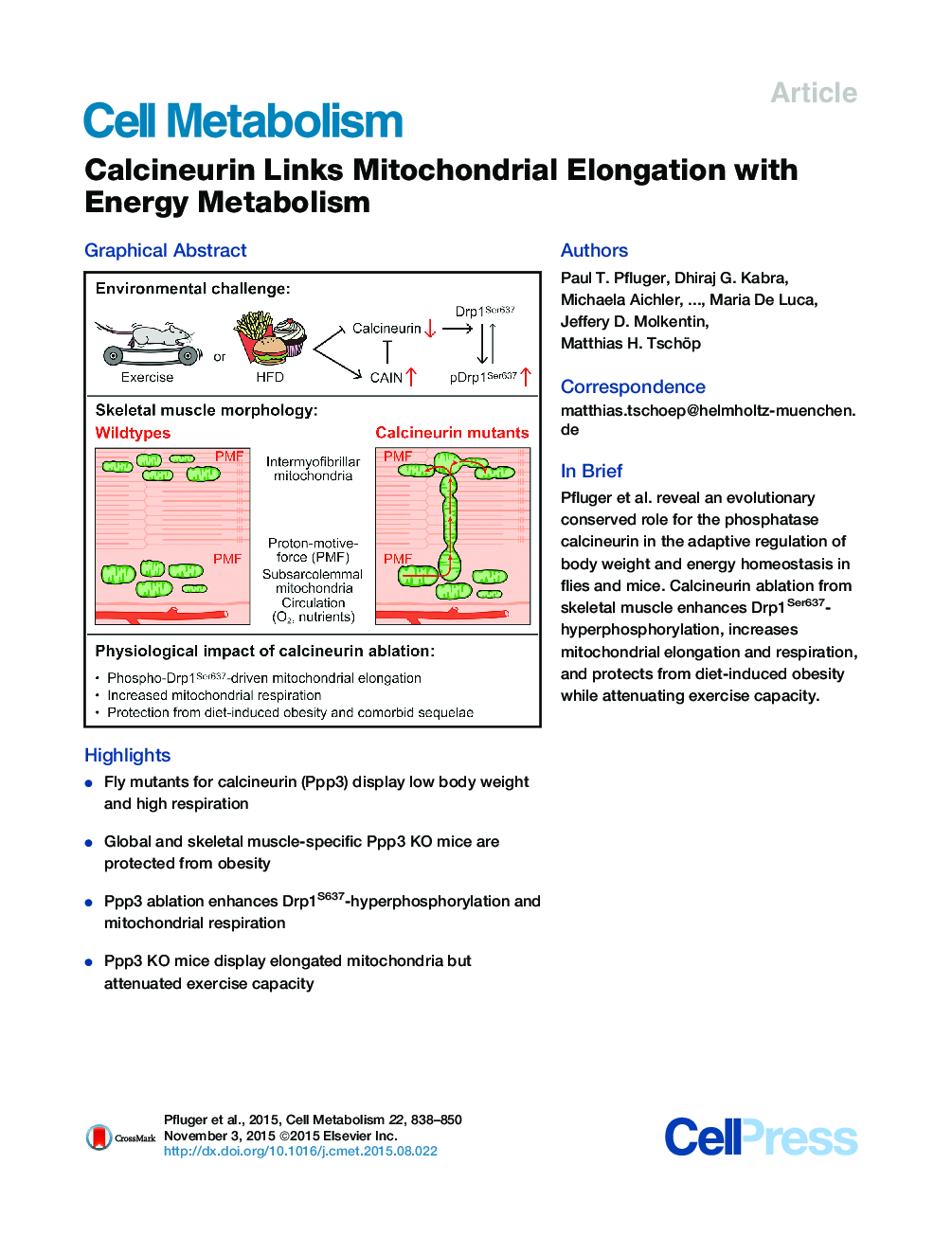| Article ID | Journal | Published Year | Pages | File Type |
|---|---|---|---|---|
| 2792556 | Cell Metabolism | 2015 | 13 Pages |
•Fly mutants for calcineurin (Ppp3) display low body weight and high respiration•Global and skeletal muscle-specific Ppp3 KO mice are protected from obesity•Ppp3 ablation enhances Drp1S637-hyperphosphorylation and mitochondrial respiration•Ppp3 KO mice display elongated mitochondria but attenuated exercise capacity
SummaryCanonical protein phosphatase 3/calcineurin signaling is central to numerous physiological processes. Here we provide evidence that calcineurin plays a pivotal role in controlling systemic energy and body weight homeostasis. Knockdown of calcineurin in Drosophila melanogaster led to a decrease in body weight and energy stores, and increased energy expenditure. In mice, global deficiency of catalytic subunit Ppp3cb, and tissue-specific ablation of regulatory subunit Ppp3r1 from skeletal muscle, but not adipose tissue or liver, led to protection from high-fat-diet-induced obesity and comorbid sequelæ. Ser637 hyperphosphorylation of dynamin-related protein 1 (Drp1) in skeletal muscle of calcineurin-deficient mice was associated with mitochondrial elongation into power-cable-shaped filaments and increased mitochondrial respiration, but also with attenuated exercise performance. Our data suggest that calcineurin acts as highly conserved pivot for the adaptive metabolic responses to environmental changes such as high-fat, high-sugar diets or exercise.
Graphical AbstractFigure optionsDownload full-size imageDownload high-quality image (295 K)Download as PowerPoint slide
